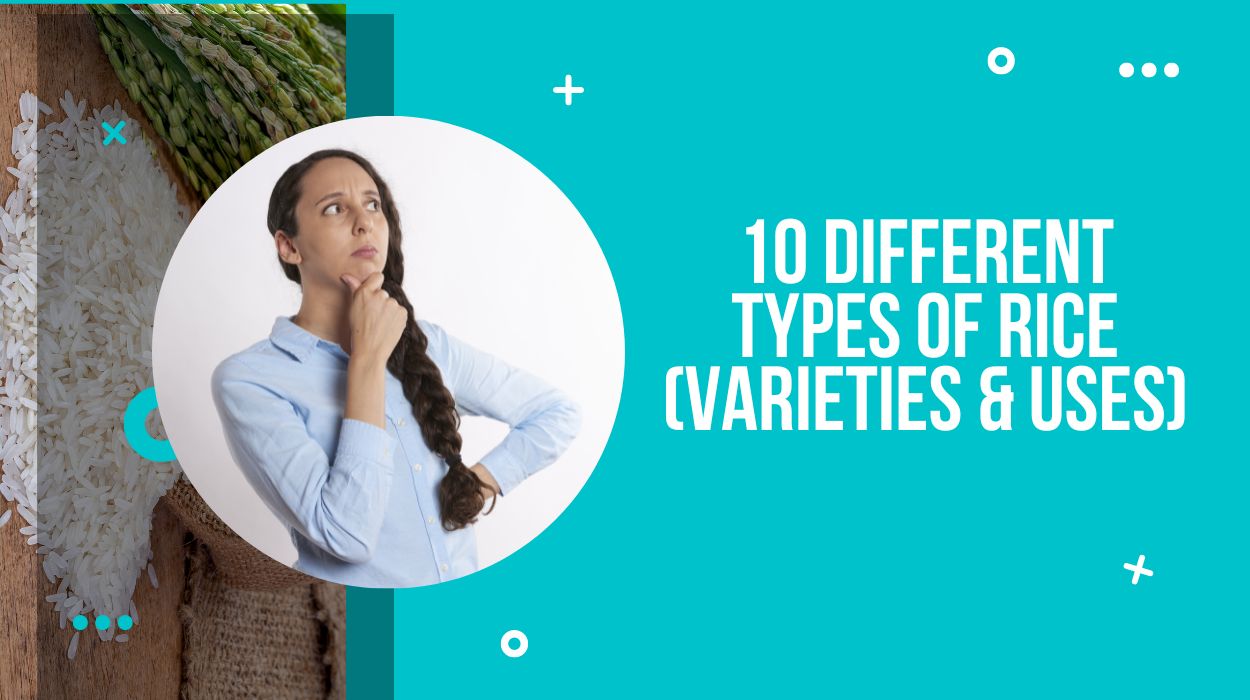The use of rice is extremely high in Asia Countries, but various kinds of dishes also use it all around the world. Whether it be Sushi, jambalaya or Burrito none of it can be made with the involvement of Rice.
In case you don’t know, there are numerous amounts of rice available in the market. So now with so much use of rice all around the world, you might be wondering which one could be the best for your taste.
But with so much variety how can someone choose? Don’t worry now in this article I’m going to cover various types of rice available in the market and help you know which will be the best choice for you by discussing their texture and characteristics like shape, colour, size and more.
10 Types of Rice
1. Arborio Rice
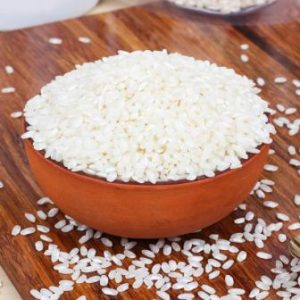
Arborio rice is a short-grain Italian type of rice. It is slightly oval-shaped along with an exterior being pearly white. Arborio was named after a town in Italy. Arborio rice has starch present due to less milling compared to other long-grain types of rice. Along with having more starch present it also is high in amylopectin.
Cooking this type of rice will result in the release of starch which helps in the rice being chewier, firmer and creamier compared to various other types of rice. Though once the arborio is cooked it still has a bit of a firm texture. Usually, this type of rice does take a bit longer to cook. Arborio is highly used in the United States.
2. Parboiled Rice
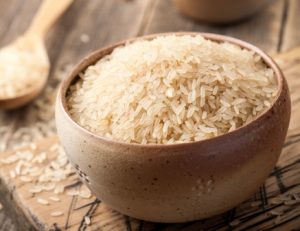
Parboiled rice is moderately precooked rice, it is boiled partially in the husk. It includes three basic steps of soaking, steaming and drying while it is still in an inedible outer husk.
These steps of parboiling boost its nutritional profile, increasing resistance to weevils and changing the texture. The colour of parboiled rice is light yellow.
This type of rice has been common in various African and Asian countries for years. Parboiled rice is a great source of calcium and iron. Compared to traditional white rice, parboiled rice provides more fibre and protein along with fewer carbohydrates and calories.
3. White Rice
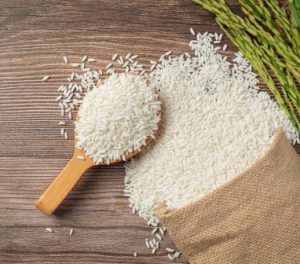
White Rice is a type of milled rice. In this, the bran, germ and husk are usually removed. This alters the appearance, flavor and texture of the rice which helps in preventing spoilage of the rice.
This results in extending the duration of storage and also makes it easier for people to digest. During the processing of white rice, it is stripped down from its enriched nutrients.
As both the polishing and mining process that takes place removes nutrients from the rice. In the 19th-century brown rice was adopted over white rice because traders favour it as white rice has led Asia to a beriberi epidemic.
However, Both white and brown rice includes the same amount of carbohydrates and calories but brown rice has more sources of nutrients due to which it is adopted over white rice. Still, white rice is majorly consumed by people around the world.
4. Basmati Rice
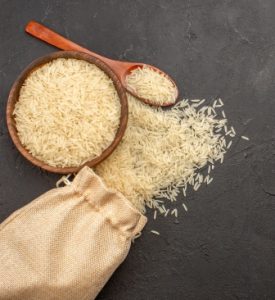
Basmati is a type of rice that is aromatic and long grain. This kind of rice is extra-long and slender, about twice the size of other rice. It contains a fluffy and soft texture upon cooking. It contains distinct flavor, delicious taste and superior aroma.
Basmati is extremely unique in itself when compared to other long-grain rice. People usually have basmati in curry. Basmati rice is traditionally grown in countries like Pakistan, India and Nepal.
The leading exporter of basmati rice in the global market is India.
5. Red Cargo Rice
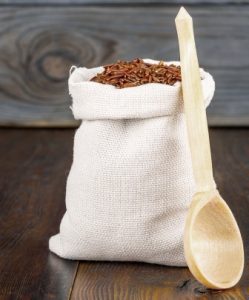
Red cargo rice is a type of non-glutinous rice. This kind of rice is similar to brown rice usually in that it’s unpolished. During the mining process, the husk of these red cargo rice is removed, retaining all the vitamins, nutrients and minerals intact in the layer of bran and in germ.
The flavor of red cargo rice one cooked is nutty and sweet along with the texture being chewier compared to white polished rice. Red rice usually takes more time to cook compared to white rice. However, red rice is a great source of Calcium, fibre, iron and thiamin.
6. Brown Rice
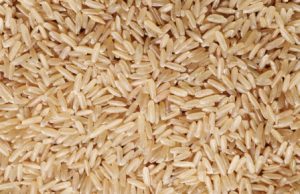
Brown rice is a type of rice that is completely whole grain. The inedible outer hull of brown rice is removed in this type of rice. Usually, the white rice contains the same grain without bran layer, hull and cereal germ.
Brown rice can simply be substituted in place of white rice in any dish. There are several nutrients that brown rice contains such as potassium, phosphorus and magnesium.
It even offers more fibre compared to white rice per serving. But it does take longer to cook if we compare it with white rice. The mainstay of brown rice is majorly in Asian countries such as Bangladesh, India and Thailand.
7. Black Rice

Black rice was also referred to as “Forbidden Rice ” in ancient times in China. Though these black rice are easily available now in stores. This kind of rice contains antioxidants which are known as anthocyanins.
These antioxidants turn it into a dark-coloured black rice’s outermost layer; the bran hull contains anthocyanins at the highest level. The taste of this type of rice is nutty and earthy. The colour of black rice is deep black and when it is cooked it usually turns deep purple.
There are numerous varieties available in black rice today such as Indonesian black rice, pirurutong black glutinous rice, Philippine heirloom balatinaw black rice and Thai jasmine black rice.
8. Jasmine Rice
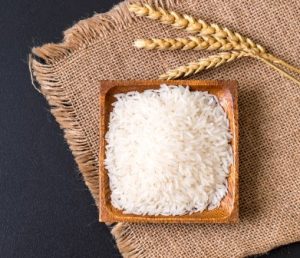
Jasmine rice is an aromatic long-grain rice with a variety of Oryza sativa. The fragrance of jasmine rice is reminiscent of popcorn and pandan. When this type of rice is cooked it becomes soft and moist in texture along with a bit of sweet flavor.
Jasmine rice is aromatic and nutty even a bit more than basmati rice. However, it originated in Thailand. It is usually a shorter grain as compared to long-grain basmati rice but jasmine rice can interchangeably be used.
9. Glutinous Rice
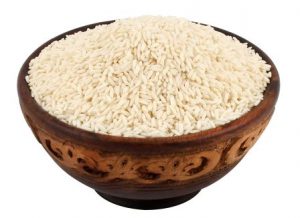
Glutinous rice is a type of rice that has a low amount of amylose content. It is referred to as glutinous due to it being stick or glue-like when cooked. Glutinous rice is majorly consumed in Asia such as in East Asia, Bhutan and Northeastern India.
There are two types available in glutinous rice: milled and unmilled, which basically means the bran is being removed or not removed. The milled glutinous rice is completely opaque and is in white colour.
While in unmilled glutinous rice the bran area can provide the rice black or purple colour. Even though both glutinous rice has a bit of difference it can be ground into flour, cooked as discrete grains and even be cooked as a gel or paste.
10. Valencia Rice
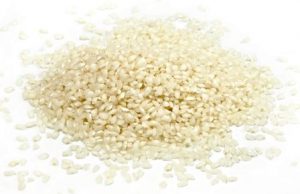
Valencia is a type of short-grain rice that comes from the province of Spanish. Valencia is also known as Bomba rice. This type of rice is majorly known for making paella. As they are round and short in shape. It has the ability to absorb more water while cooking so it becomes more moist, tender and compact.
These are various types of rice that are used all around the world by people for different kinds of flavors, textures and requirements.
What should be the ratio of water to rice while cooking?
The ratio is usually in the case of 1 part of rice about 1.5 or sometimes about 2 parts of water. This majorly depends on the variety as well. Because different kinds of rice require different amounts of water. For example, long-grain rice requires more water compared to small grain rice.
In such cases, it is recommended to check the back of the rice bag as it mentions the amount of water that needs to be added in order to cook the rice.
Length and Shape of different types of Rice
In terms of length and shape rice is characterized into three categories: long grain rice, short-grain rice and medium grain rice. All these three categories represent different types of shapes and lengths of the grain.
Long grain rice contains a long cylindrical shape. Meanwhile, short-grain rice is way shorter than these long cylindrical shapes and these short-grain rice are even wider compared to long grain rice.
Long grain rice
This long-grain rice contains milled grains and therefore are about three to four times longer as these types of rice are wide. They even separate due to the starch composition. Along with that, long grain rice also becomes fluffy and light when they are cooked.
Medium Grain Rice
Medium grain rice has a wider and shorter kernel as compared to long grain rice. When these medium grain rice are cooked they become more tender and moist even more than long grain rice. Medium grain rice even has a good tendency to stick together.
Short Grain Rice
Just like the name itself suggests, these short-grain rice are short in length. However, these short grains are wide and when they are cooked it provides a sticky texture. These short-grain rice are considered the best option for food like sushi.
What are some benefits of Rice?
Restore energy and glycogen level after physical activity or exercise
White rice is preferred as a good source of energy. Various athletes tend to consume these white in order to maintain their energy, especially after the exercise as they need a source of energy to maintain their health. Refined carbs included in white rice is an easy and quick source to access carbohydrates that replenish the glycogen muscle after exercise or physical activity. Due to this, it is considered a good source of energy.
Brown rice is a great way to protect the body from chronic diseases
Brown rice contains protective compounds such as flavonoids and it also retains the layer bran. These compounds work greatly in protecting the human body from numerous chronic diseases. Brown rice contains protein and fibre which itself is great for maintaining health and even works in reducing heart disease risks.
White rice is good for the digestive system
White rice is low in terms of fibre. So when this white rice gets cooked and is consumed in the right form it is extremely unlikely for it to upset the stomach and is digested easily.
FAQs
Which type of rice is considered the healthiest?
Rice such as whole-grain brown, black rice and red rice is considered the healthiest. These are good for the body and reduce the risk of obesity, heart disease and some cancers. So, if you want to enjoy rice along with maintaining your health you should go for such whole grain rice or red and black rice.
In how much time rice gets cook?
The amount of time required for rice to cook majorly depends on the type of rice you are using along with the quantity and shape of the rice. Like white rice is able to be ready faster than brown rice. Usually, the timings range from 15 to 25 minutes. In the case of black rice, it can take about 30 minutes.
What type of rice is used for making sushi?
Short grain rice is the type of rice one should use while making sushi. As when these short-grain rice are cooked they provide a sticky texture and they are even wide in length due to which they are good for sushi.
You May Also Like To Read:
Benefits Of Rice Water For Skin
Conclusion
Rice is majorly used around the world. Rice is a huge part of numerous dishes due to which the variety of these rice has also increased. I hope through this article you are able to learn everything about different kinds of rice across the globe. Apart from just the name we also discussed the size, shape, flavor and texture each of these rice brings out.
Tell us in the comment section what is your favourite type of rice along with the dish you enjoy it most with.

